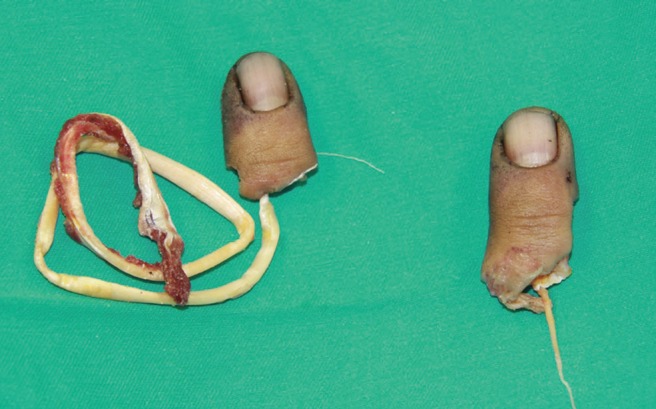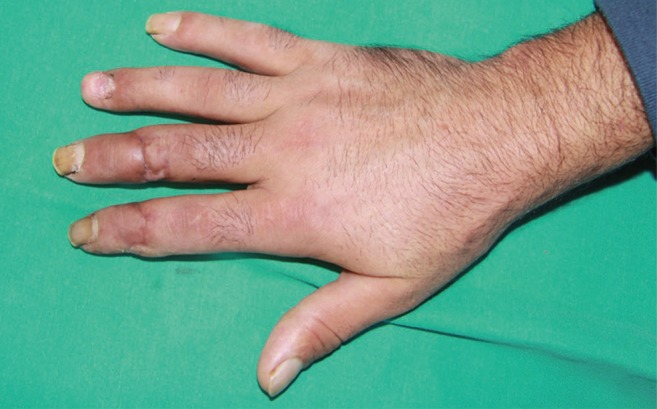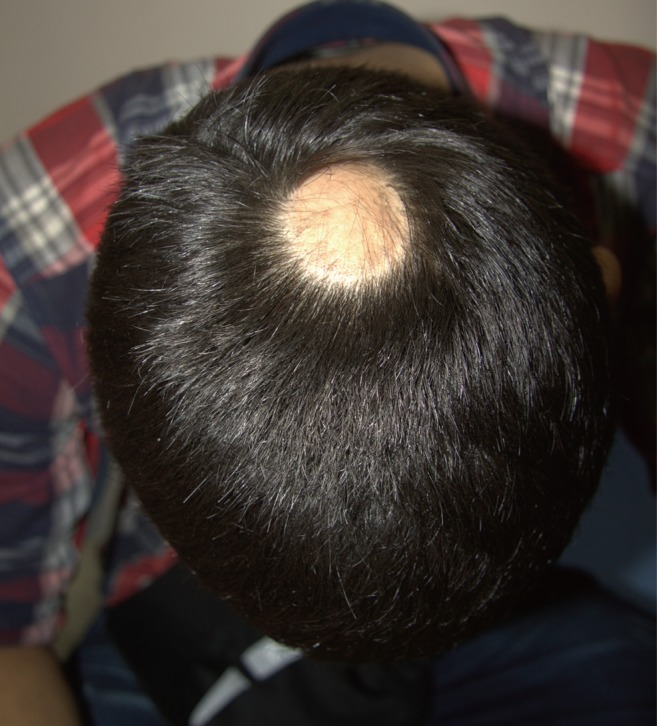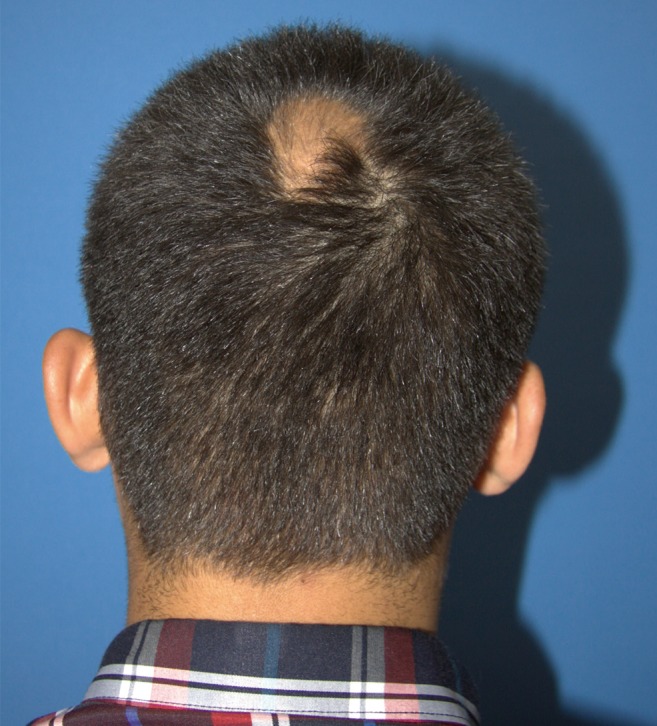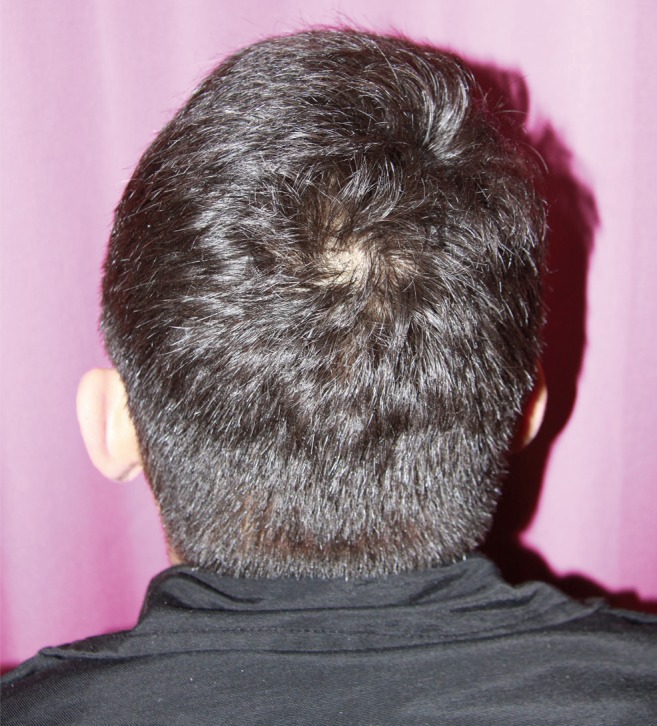Transient hair loss is characterized as localized hair loss without scar formation. Hair loss can be in a localized part of the occipital area that develops 2-3 weeks after long-lasting surgery. Ischemic changes in the scalp exposed to pressure during long-term surgery are blamed for the hair loss. Its first signs are tenderness, swelling, and ulceration in the area subjected to pressure. In the histopathologic examination, chronic inflammation, an effect on hair follicles in the catagen phase, and cell death by apoptosis are observed [1,2].
Totally amputated second and third fingers of a 21-year-old male were replanted under general anesthesia in 8 hours (Figs. 1, 2). There were no postoperative complications, but the patient described tenderness and redness in the occipital area in the postoperative period. There were no pathologic signs except hyperemia. On postoperative day 10, hair loss was detected in a restricted area in the occipital region, and in postoperative week 3, this area was totally bare (Fig. 3). No fungi were detected in the microbiological examination. This condition was considered hair loss resulting from pressure ischemia related to the head position during long-term surgery. Hair started to grow again in postoperative month 3, and the condition completely resolved in postoperative month 6 (Figs. 4, 5).
Postoperative transient hair loss was first described after long-lasting gynecological operations [1]. Subsequently, it has been reported after cardiac, gynecologic, abdominal, aesthetic, and breast reconstruction surgery [3,4]. However, to the best of our knowledge, postoperative transient hair loss after finger replantation surgery has not been reported before.
Ischemia secondary to localized pressure and perioperative stress plays an important role in the etiology of postoperative transient hair loss. Its general presentation in the occipital area supports the pressure effect. Hair loss begins between postoperative day 3 and 28. Normal hair structure is expected to be acquired within 120 days. Physiological disorders were reported to trigger postoperative transient hair loss [5]. Microsurgical operations are usually long-lasting surgical procedures. In hand surgery operations where microsurgery is intensely performed, attention should be paid to this rare complication. In multiple replantation cases, we think that changing the head position intermittently and controlling perioperative stress may reduce the effect of the long surgery time on the scalp skin.




